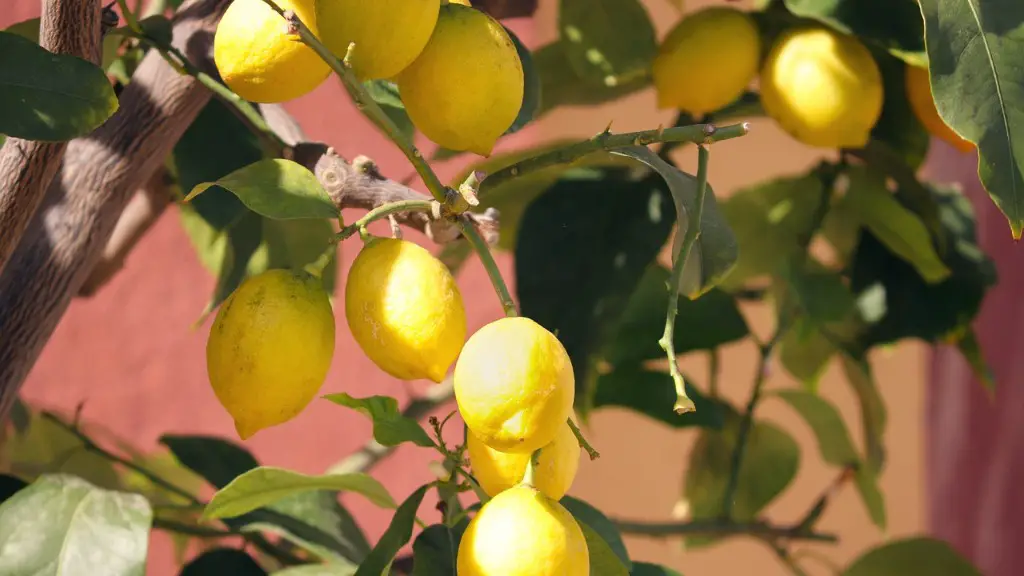When it comes to indoor plants, sago palm tree is one of the top favorites. This versatile and attractive plant can turn any room into a showstopper and provide a lot of life and energy. Though relatively easy to care for, there are still some essential things to remember when it comes to keeping your sago palm tree in tip top shape.
The first key thing to remember about sago palms is that they prefer bright indirect lighting. While there are some exceptions, most sago palms do best when kept out of direct sunlight, particularly during the warmer months of the year. Too much direct light can burn the leaves and result in browning, which can permanently damage them. If you can’t provide adequate indirect light, you might want to consider a sago palm that is more tolerant of low light.
The second key thing to remember is that they need to be watered properly. Sago palms are very forgiving when it comes to water and don’t need to be watered as often as other plants. Instead, they prefer to be watered deeply and then allowed to dry out completely before being watered again. The best way to tell when your sago palm needs to be watered is by checking the moisture level of the soil. If it is dry to the touch, then it’s time to water it. It’s also essential to make sure your sago palm is in a container with drainage holes to allow excess water to drain away.
Fertilizing is also important for keeping your sago palm happy and healthy. While fertilizer is not required all the time, it can be a great way to give your plant an energy boost. A balanced fertilizer should be applied at least once a month, or when you notice that the plant is looking a bit dull or pale.If you want to ensure that you’re giving your sago palm the best possible care, it’s also important to make sure it is in a well-draining potting soil mixture.
Finally, it’s also important to be aware of any pests or diseases that can affect your sago palm. Common pests include aphids and scale, while common diseases include root rot and leaf spot. If you notice any signs of these issues, it’s important to take steps to address the problem right away. This can be done by pruning away any affected leaves and taking steps to improve the soil and drainage.
Proper Pruning
Keeping your sago palm trimmed is one of the most important things you can do to keep it looking healthy and vibrant. Prune your sago palm as often as needed to keep it looking neat and to prevent it from getting too large or taking over the space. To prune your sago palm, first cut any dead or dying fronds as close to the trunk as possible. It is also important to make sure there are no long spaces between branches, as this can cause them to become weak and more prone to breaking.
Special care should be taken with the stem when pruning sago palms, as it can be easily damaged. Pruning should always be done carefully and cautiously to avoid any unnecessary damage. After pruning, make sure to remove any debris that has accumulated around the plant and dispose of it properly.
Repotting
It is also important to properly repot your sago palm tree on a regular basis to ensure it stays healthy. Repotting will help your sago palm to grow in size and provide it with fresh, nutrient-rich soil. When it’s time to repot, make sure to use a container that is just a bit larger than the previous one and be sure to use a well-draining potting mix. After repotting, your sago palm should be given a good water to help it get settled in its new home.
Propagation
If you’re looking to expand your sago palm collection, you can do so fairly easily by propagating your plant. To propagate a sago palm, simply cut off a healthy frond that still has the roots attached and place it in an appropriately sized container with some well-draining soil. Water your newly propagated sago palm just as you would a mature sago palm and give it some bright indirect light.
Once your sago palm is established, it can be transplanted into its own container with fresh, nutrient-rich soil. After transplanting, make sure to give your sago palm enough water, light and fertilizer to ensure it is healthy and thriving in its new home.
Protection in Winter
As a tropical plant, sago palms need special care during the colder months of the year. If you plan on keeping your sago palm outdoors, you should make sure it is in a protected area that does not receive direct exposure to frost or snow. If your sago palm will be kept in a pot, it should be brought indoors before the temperature drops below freezing. Make sure you acclimatize the plant slowly over a few days, as sudden changes in temperature can shock the plant.
Preventing Pests & Diseases
The best way to keep your sago palm healthy and free from pests and diseases is to provide it with the proper care. Keeping it in a well-draining soil and proper container, providing it with adequate moisture and light, and keeping it pest and disease free are all essential for keeping your sago palm looking its best. If you notice any signs of pests or diseases, the best thing to do is to promptly take action to address the issue before it gets any worse.
Frequent Maintenance
In order to keep your sago palm in top condition, it is important to regularly inspect and maintain the plant. This means taking the time to check the soil moisture, looking at the leaves and stem for any signs of pests or disease, and ensuring that your sago palm is getting adequate nutrition and light. Catching and addressing potential issues before they become larger is the best way to keep your sago palm healthy and looking its best.


